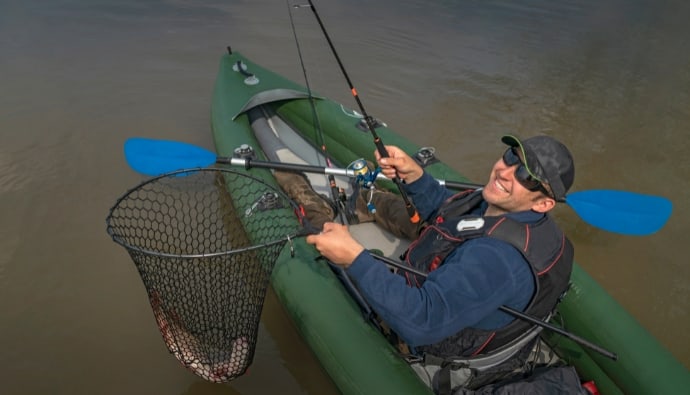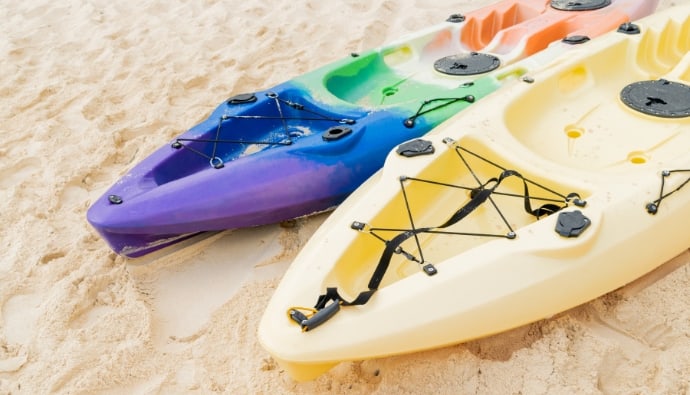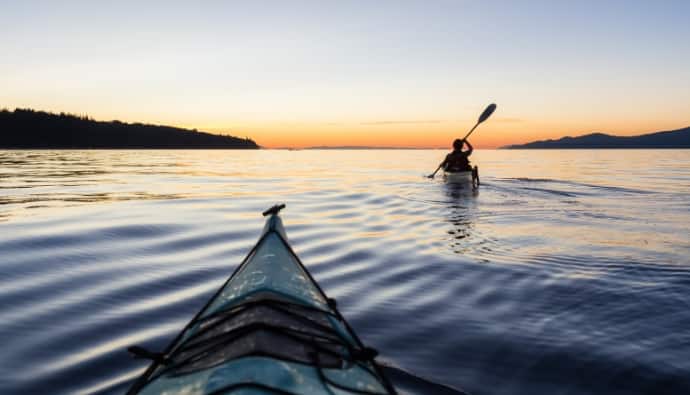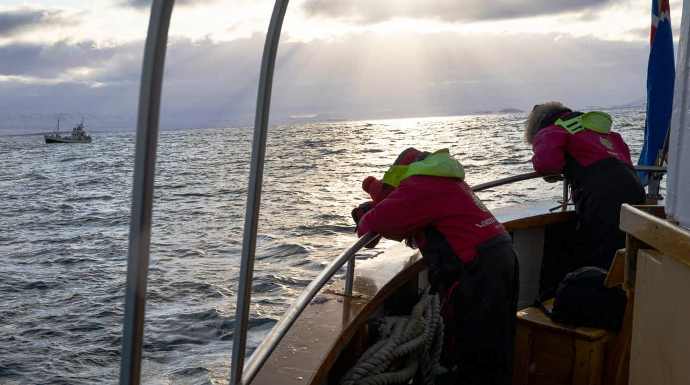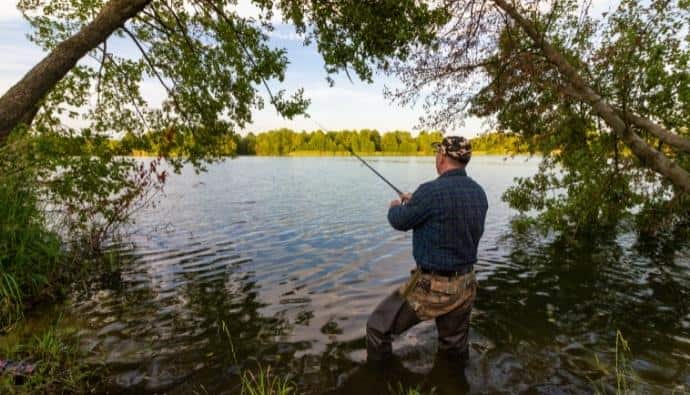Being in nature can be one of the most peaceful and exhilarating experiences. Paddling through glassy waters with only the sounds of wildlife can fill you with a sense of wonder. And kayaking is one of the best ways to get out and enjoy the great outdoors.
But before heading out on your next kayaking adventure, it’s essential to know a little bit about the different types of kayaks that are available. After all, not all kayaks are created equal. Some are better suited for certain activities than others.
Here is a rundown of the different types of kayaks that you may encounter on your travels:
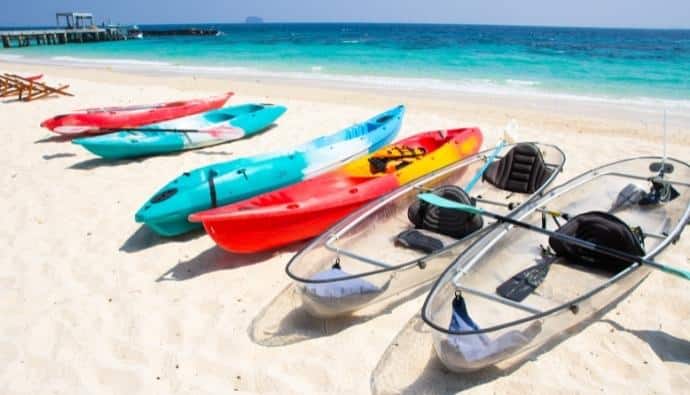
Different Types of Kayaks
Kayaking is the way to go for an enjoyable and peaceful experience while being one with nature. However, kayaks are not all the same and differ in many ways.
Knowing about the various types of kayaks before your next adventure is essential to maximize your experience. Here are the different types of kayaks:
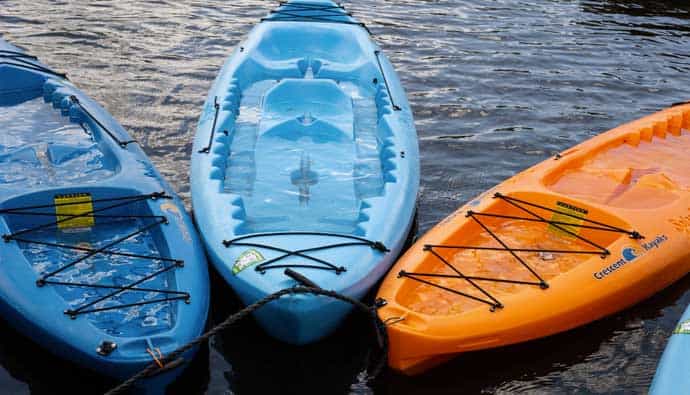
1. Sit-On-Top Kayaks
As the name suggests, a sit-on-top kayak has an open deck, which means you sit on top of the kayak rather than inside it. These kayaks are stable and easy to get in and out of, making them a good choice for beginners or those who want to fish or swim from their kayak.
They are also a good choice for warmer climates as you won’t get as wet sitting on top of the kayak.
2. Inflatable Kayaks
Inflatable kayaks are made of a durable, lightweight material that can be inflated and deflated.
They are easy to transport and store, making them a good choice for those who don’t have a lot of storage space. Inflatable kayaks are best suited for those who want to travel with their kayak, as they can be easily packed into a car.
3. Whitewater Kayaks
Whitewater kayaks are designed for moving through rapids and other rough waters with their shorter length and wider width.
They are often outfitted with features like thigh straps and spray skirts to help keep you in the kayak and dry. Whitewater kayaks are not recommended for beginners as they can be difficult to control.
There are four main types of whitewater kayaks: Playboats, Creek boats, long Boats, and river runners.
4. Touring Kayaks
You guessed it – touring kayaks are designed for long-distance trips. They are between 12 and 24 feet long and have a sleek design that helps them move quickly through the water.
A touring kayak often has storage compartments for gear, making them a good choice for overnight trips. Although they are not as maneuverable as other types of kayaks, their speed and storage capacity make them a good choice for those looking to explore.
5. Recreational Kayaks
Recreational kayaks are designed for casual use and are often used in calm waters like lakes and slow-moving rivers. Their length (between 8 and 12 feet) and width make them stable and easy to handle.
They also have plenty of gear storage space, making them great for a day on the water. A recreational kayak is perfect if you want to paddle in calm waters and don’t need a lot of speed.
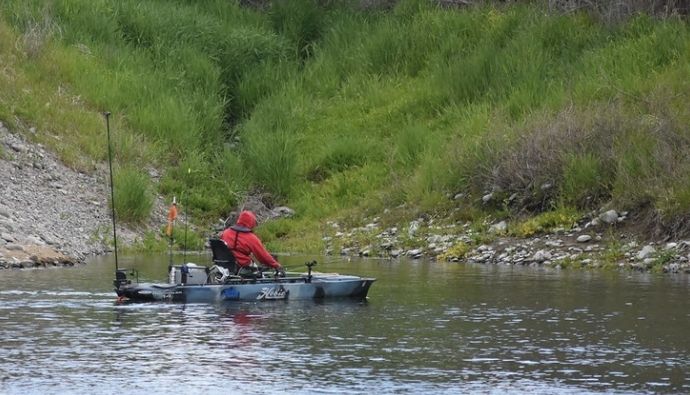
6. Fishing Kayaks
If you’re looking to fish from your kayak, then a fishing kayak is what you are looking for. They have all the features of a recreational kayak but also have extras like built-in fish finders and rod holders.
Fishing kayaks have a length of 12 feet and wider width to provide stability when casting a line. The added storage space is also helpful for storing bait and tackle.
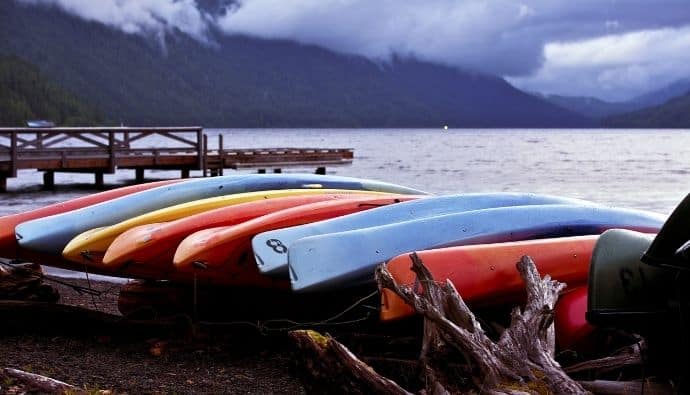
7. Tandem Kayaks
If you want to share your kayaking experience with a friend or family member, then a tandem kayak is the way to go. These kayaks are designed for two people and come in various lengths and widths.
Some tandems even have a third seat in the middle for a child or pet. Tandem kayaks are a great option if you want to paddle with your partner.
8. Sea Kayaks
While all kayaks can be used in the sea, sea kayaks are designed specifically for paddling in salt water. You’ll often find them in coastal areas as you can use them for exploring the shoreline.
Sea kayaks are longer and narrower than other kayaks, making them faster in the water. They also have a variety of storage options for gear and supplies. They are often outfitted with a spray skirt, which helps keep you dry in rough waters.
9. Inflatable Whitewater Kayaks
As the name suggests, these kayaks are whitewater kayaks that are also inflatable. They are made with a durable material that can withstand the rigors of whitewater paddling but can also be deflated and packed away when not in use.
Inflatable whitewater kayaks are a good choice for those who want the versatility of an inflatable kayak but also want to be able to paddle in whitewater.
10. Pedal Kayaks
Pedal kayaks are pedal-powered kayaks instead of paddles. They have a propeller attached to the back of the kayak driven by pedals in the cockpit near your feet.
Pedal kayaks are a good choice for those who want to explore larger bodies of water or for those who want to have their hands free while paddling.
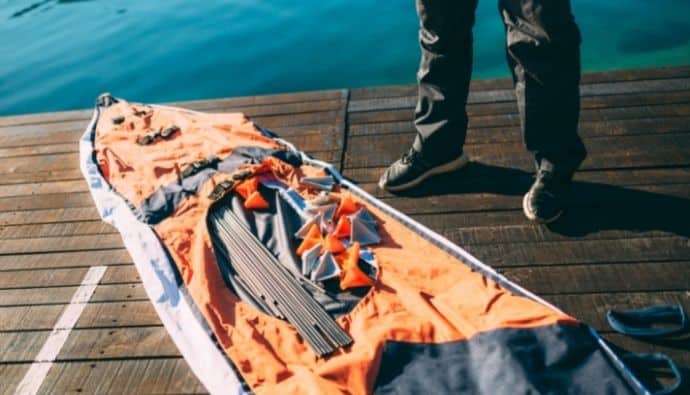
11. Folding Kayaks
A folding kayak is a portable kayak that can be easily transported and stored. They are made with various materials, but the most common is a type of plastic called polyethylene. Folding kayaks may be best suited for you if you want the portability of an inflatable kayak but the durability of a hard-shell kayak.
12. Solo Kayaks
These kayaks are designed for one person and are often shorter and lighter than other types of kayaks. If you want to paddle alone or looking for a lighter and more maneuverable kayak, solo kayaks are the way to go.
Which Type of Kayak Is Better?
There is no definitive answer as to which type of kayak is better. It depends on your individual needs and preferences. A sit-on-top kayak might be a good choice if you’re a beginner.
An inflatable kayak might be a better option if you want to travel with your kayak. And if you’re looking to fish from your kayak, then a fishing kayak might be the best choice.
It depends on what you want to use your kayak for. So, take some time to think about your needs before making a decision.
Is a Heavier Kayak More Stable?
Not necessarily. While a heavier kayak might be more stable in the water, moving around on land will also be more difficult. A heavier kayak might be a good choice if you plan on paddling in calm waters.
But if you want to be able to move your kayak around on land, then a lighter kayak might be a better option. It depends on your individual needs and preferences.
What Kind of Kayak Is Easiest to Use?
You might be surprised to learn that tandem kayaks are often the easiest to use. This is because you have two people paddling, which can help keep the kayak on course. If you’re paddling alone, a sit-on-top kayak might be the easiest.
These kayaks are stable and easy to maneuver. And if you’re new to kayaking, then an inflatable kayak might be the best choice. These kayaks are easy to set up and take down and are also very stable in the water.
Is a Sit-on or Sit-in Kayak Best?
If you’re wondering what type of kayak you should get, sit-on-top or sit-in, the answer isn’t always simple. It depends on what type of kayaking you’ll be doing.
Sit-on-top kayaks are easier to get in and out of and more stable than sit-in kayaks. They’re also easier to keep dry since you don’t have to worry about water entering the kayak. Sit-on-top kayaks are a good choice for casual kayaking, fishing, and swimming.
Sit-in kayaks are more comfortable in cold weather since you’re less likely to get wet. They’re also faster and more efficient since they’re narrower and you’re closer to the water. Sit-in kayaks are suitable for serious kayaking, racing, and long trips.
The best one for you depends on your needs. If you’re new to kayaking or want to paddle around in calm waters, a sit-on-top kayak might be a good choice. A sit-in kayak might be the best if you’re more experienced or want to paddle in rougher waters.
What Type of Kayak Is Safest?
Safety is always a top priority when kayaking, no matter what kayak you use. That being said, sit-on-top kayaks are generally considered the safest type of kayak. This is because they’re more stable and less likely to tip over.
Sit-in kayaks are also safe, but you should know you could get trapped in the kayak if it capsizes. Inflatable kayaks are also safe, but you should ensure they’re adequately inflated.
Final Thoughts
Being out on the water in a kayak is a great way to relax and enjoy the scenery. But before doing that, you need to choose the right kayak. There are many different kayaks to choose from, and the best one for you depends on your needs and preferences.
So, take some time to think about what you want to use your kayak before making a decision. And if you’re new to kayaking, take a few lessons before heading out on your own.



 Facebook
Facebook YouTube
YouTube